This up-to-date roundup presents the 7 clinical-stage gene-editing approaches to sickle cell disease, which affects millions of people worldwide and is the most common inherited blood disorder in the United States. Current clinical-stage approaches to treating this disease include CRISPR-Cas9, CRISPR-Cas12a, and base editing.
Get Started for FREE
Sign up with Facebook Sign up with X
I don't have a Facebook or a X account

 Your new post is loading... Your new post is loading...
 Your new post is loading... Your new post is loading...
BigField GEG Tech's insight:
HIV attacks the immune system by infecting a type of white blood cell in the body that is vital for fighting infection. Without treatment, HIV can destroy these white blood cells, reducing the body's ability to develop an immune response, eventually leading to AIDS. Kevin Morris, Ph.D., of City of Hope and the Menzies Health Institute Queensland at Griffith University in Australia, has been investigating a new approach to blocking and locking down HIV in mice. The researchers are using exosomes, tiny nanoparticles capable of being taken up by cells, to deliver a new recombinant anti-HIV protein, called ZPAMt, into HIV-infected cells. The ZPAMt protein was designed by researchers to bind to a region of the virus called the LTR that is essential for virus replication. The protein contains an epigenetic marker that alters the way HIV genetic information is expressed, suppressing it and rendering the virus unable to divide and multiply. Exosomes are able to cross the blood-brain barrier and enter the brain, making this treatment capable of targeting this hard-to-reach organ. In the future, researchers plan to study the use of exosomes to deliver treatments that can help anti-HIV CAR T cells kill HIV-infected cells. 
BigField GEG Tech's curator insight,
October 6, 2021 5:01 AM
BigField GEG Tech's insight:
Since CRISPR-Cas was first adapted for eukaryotic genome editing in 2013, the technology and the toolbox have advanced by leaps and bounds. Today, a number of CRISPR-based therapies are moving through clinical trials with promising results. Despite these improvements, a number of challenges remain in the field of CRISPR medicine, one of which is the challenge associated with the limited size capacity of adeno-associated viral (AAV) vectors used to deliver gene editing reagents to cells. Last year, the CasΦ family of CRISPR endonucleases (also known as Cas12j) was discovered as a very compact CRISPR system in ancient giant phages. In addition, CasΦ was shown to edit genomic DNA in mammalian and plant cells, but questions about its mechanism of action remained open. Thus, this discovery raised hopes that a solution to the AAV capacity challenge was at hand. Only a year later, Guillermo Montoya's team at the University of Copenhagen, Denmark, answered these questions by solving, using Cryo-em, the structure of Cas12j3 in complex with a DNA target after cleavage, paving the way for future optimization of CasΦ genome editors and facilitating the future redesign of this CRISPR system for therapeutic genome editing.
A research team led by Dr Aixin YAN, Associate Professor from the Research Division for Molecular & Cell Biology, Faculty of Science, in collaboration with Honorary Clinical Professor Patrick CY WOO from the Department of Microbiology, Li Ka Shing Faculty of Medicine, the University of Hong Kong, reported the development of a transferrable and integrative type I CRISPR-based platform.
BigField GEG Tech's insight:
A team identified a highly active IF-like CRISPR-Cas system in a clinical strain of multidrug-resistant P. aeruginosa PA15419. They characterized this CRISPR-Cas system and successfully developed a genome editing method that enabled rapid identification of multidrug resistant pathogen determinants and development of a novel anti-drug resistance strategy. In this study, to overcome the barrier of transferring the type I complex caspase to heterologous hosts, the team cloned the entire type IF caspase operon into an integration-capable mini-CTX vector and delivered the cassette to heterologous hosts by conjugation, a common DNA transfer approach in nature. The mini-CTX vector enabled integration of the entire cascade at the conserved attB genetic locus in the genome of the heterologous hosts, allowing them to harbor a "native" type IF CRISPR-Cas system that can be stably expressed and function. The team showed that the transferred type IF Cascade displays significantly greater DNA interference capacity and higher strain stability than the transferable Cas9 system and can be used for genome editing with efficiency (> 80%) and simplicity. This new method should be extended to editing not only pathogens but also the microbiome to promote human health.
Last weekend, Intellia Therapeutics and Regeneron announced first-ever clinical data that support the safety and efficacy of in vivo CRISPR genome editing in humans. We summarise the findings here.
BigField GEG Tech's insight:
Hereditary transthyretin amyloidosis with polyneuropathy (ATTRv-PN) is a disease caused by the transthyretin (TTR) protein being misfolded and accumulating as amyloid fibrils in tissues throughout the body. However, a single-dose, in vivo genome editing-based therapy, named NTLA-2001, has been developed by Intellia Therapeutics (Cambridge, MA) and Regeneron (New York) against ATTRv-PN. NTLA-2001 comprises a TTR-targeting gRNA and a Cas9 mRNA, both of which are delivered systemically to target the liver using Intellia's proprietary lipid nanoparticle (LNP) delivery technology. After IV administration of NTLA-2001, LNPs are opsonized by apolipoprotein E and transported through the bloodstream directly to the liver. Apolipoprotein E acts as a liver-targeting ligand due to overexpression of the low-density lipoprotein receptor on hepatocytes. The treatment is therefore designed to selectively reduce the concentration of TTR in serum through CRISPR-based inactivation of the TTR gene in liver cells. In all 6 patients, reductions in TTR levels were observed, with mean reductions of 52% and 87% in the lower and higher dose groups, respectively. One patient in the highest dose group had a 96% reduction in TTR levels at Day 28. The study is expected to be completed in 2024.
There is a strong link between hormonal contraceptives and breast cancer risk. The main culprit are progestins, synthetic mimics of the pregnancy hormone progesterone that stimulate cell growth in the breast. An EPFL study into the distinct biological effects of different progestins on the breast shows that contraceptive-related breast cancer can be prevented by more informed choices about the composition of contraceptives.
BigField GEG Tech's insight:
Proud to share the work of one of our long-standing partners who recently published in EMBO Molecular Medicine , study for which we have provided our expertise in vectorology. This work has also been subject of a video allowing to hear the Professor Cathrin Brisken talk about this area.
https://www.embopress.org/doi/full/10.15252/emmm.202114314 https://www.youtube.com/watch?v=POV1vI4yI6Y
Most known pathogenic point mutations in humans are C•G to T•A substitutions, which can be directly repaired by adenine base editors (ABEs). In this study, we investigated the efficacy and safety of ABEs in the livers of mice and cynomolgus macaques for the reduction of blood low-density lipoprotein (LDL) levels. Lipid nanoparticle–based delivery of mRNA encoding an ABE and a single-guide RNA targeting PCSK9, a negative regulator of LDL, induced up to 67% editing (on average, 61%) in mice and up to 34% editing (on average, 26%) in macaques. Plasma PCSK9 and LDL levels were stably reduced by 95% and 58% in mice and by 32% and 14% in macaques, respectively. ABE mRNA was cleared rapidly, and no off-target mutations in genomic DNA were found. Re-dosing in macaques did not increase editing, possibly owing to the detected humoral immune response to ABE upon treatment. These findings support further investigation of ABEs to treat patients with monogenic liver diseases. Base editors are effective and safe for cholesterol reduction in non-human primates.
BigField GEG Tech's insight:
Low-density lipoprotein (LDL) can carry thousands of fat molecules,
Early results from a new, pioneering chimeric antigen receptor (CAR) T cell immunotherapy trial led by researchers at the UCLA found using a bilateral attack achieves a more robust defense and helps avoid relapse.
BigField GEG Tech's insight:
Patients diagnosed with relapsed or refractory B-cell lymphoma tend to have poor outcomes with second-line therapies. CAR T cells have been a game changer for many people with this disease. However, 50% of patients relapse after six months. Researchers at the UCLA Jonsson Comprehensive Cancer Center have therefore developed a new CAR T cell-based immunotherapy for people with non-Hodgkin's B-cell lymphoma that allows for a bilateral attack by targeting CD19 and CD20 instead of a conventional approach by targeting only CD19, thereby minimizing resistance to treatment. This new approach allows for a more robust defense, helps avoid relapse and prevents antigen leakage. For the first clinical trial, T lymphocytes from 5 patients were collected, modified in the laboratory to produce anti CD19-CD20 CAR T cells and then reinjected into the patients. The results of the first clinical trial demonstrated a complete metabolic response with minimal toxicity in four of the five treated patients. The goal of the study was to determine a safe therapeutic dose.
BigField GEG Tech's insight:
In an article published in the April 8 issue of Nature, the National Institutes of Health's Somatic Cell Gene Editing Consortium provided a detailed update on the progress of their nationwide effort to develop safer and more effective methods to edit the genomes of disease-relevant somatic cells and reduce the burden of disease caused by genetic changes.
Results confirming the vaccine’s strong protection against COVID-19 were welcomed following last week’s pause in roll-outs — but fresh questions have now emerged about the data.
BigField GEG Tech's insight:
After a pause in the use of AstraZeneca's vaccine in several European countries to investigate reports of blood clotting conditions in a number of vaccine recipients, the European Medicines Agency considers AstraZeneca's vaccine to be safe and the World Health Organization continues to recommend it. The vaccine has received regulatory approval in more than 100 countries but has not yet been approved in the United States. Amidst these uncertainties, this vaccine raises many questions. How effective is this vaccine? How safe is it? How effective is it in the elderly? What is the optimal timing of doses? What impact will this week's confusion have on the U.S. rollout? How well does the vaccine perform against the variants? At this point, are we able to answer most of these questions correctly? What do we know and what do we not yet know? These questions are even more important as AstraZeneca will soon begin trials on next-generation vaccines against current variants of SARS-CoV-2 and will be available by the end of 2021.
BERLIN (AP) — Germany, France and Italy on Monday became the latest countries to suspend use of AstraZeneca’s COVID-19 vaccine over reports of dangerous blood clots in some recipients, though the...
BigField GEG Tech's insight:
Germany, France and Italy on Monday became the latest countries to suspend use of AstraZeneca’s COVID-19 vaccine over reports of dangerous blood clots in some recipients, though the company and European regulators have said there is no evidence the shot is to blame.
CRISPR-Cas is seen as the holy grail in medicine for rare and incurable genetic diseases. In this piece, we take a look at what CRISPR can do for Duchenne muscular dystrophy.
BigField GEG Tech's insight:
Duchenne muscular dystrophy (DMD) occurs in approximately 1 in 3,500 to 5,000 live male births worldwide. It is an X-linked disease that results from mutations in the DMD gene that codes for dystrophin. DMD leads to progressive muscle weakness and muscle death, inflammation and loss of mobility before adulthood. Respiratory and cardiac dysfunctions occur in advanced stages of the disease and people with DMD usually die prematurely. In recent years, four gene targeting therapies have received FDA approval for DMD. All of these therapies are antisense olignonucleotides that work by binding to the transcript of pre-mRNA dystrophin. These exons skipping therapeutic strategies can theoretically treat more than 80% of DMD mutations, their efficacy has so far raised concerns, they do not treat cardiac dysfunction in DMD, and are not curative. However, an in vivo CRISPR therapy would treat DMD mutations at the genomic level, offering a permanent correction and circumventing the need for regular dosing. For example, research in Germany last year revealed that the suppression of exon 51 by CRISPR-Cas9 in pigs lacking exon 52 resulted in widespread expression of dystrophin in muscles, including the diaphragm and heart, prolonging survival and reducing the risk of irregular heart rhythm.
Executives shared an update on the biotech's investigation of the two cases at an investor conference, rather than via a statement or regulatory filing.
BigField GEG Tech's insight:
Bluebird bio has stopped two clinical studies of its gene therapy for sickle cell disease after one participant developed leukemia and researchers reported another has a cancer-like disease of the bone marrow. Bluebird is trying to determine where the vector integrated into the cell's genome, aiming to assess proximity to the genes that triggered the patient's cancer. The company will also examine whether the vector influenced gene expression, said chief scientific officer Phillip Gregory.
Part of answer? https://pubmed.ncbi.nlm.nih.gov/22523069/ https://pubmed.ncbi.nlm.nih.gov/19707188/
|
Nanoparticle-sensitized photoporation is an upcoming approach for the intracellular delivery of biologics, combining high efficiency and throughput with excellent cell viability. However, as it relies on close contact between nanoparticles and cells, its translation towards clinical applications is hampered by safety and regulatory concerns. Here we show that light-sensitive iron oxide nanoparticles embedded in biocompatible electrospun nanofibres induce membrane permeabilization by photothermal effects without direct cellular contact with the nanoparticles. The photothermal nanofibres have been successfully used to deliver effector molecules, including CRISPR–Cas9 ribonucleoprotein complexes and short interfering RNA, to adherent and suspension cells, including embryonic stem cells and hard-to-transfect T cells, without affecting cell proliferation or phenotype. In vivo experiments furthermore demonstrated successful tumour regression in mice treated with chimeric antibody receptor T cells in which the expression of programmed cell death protein 1 (PD1) is downregulated after nanofibre photoporation with short interfering RNA to PD1. In conclusion, cell membrane permeabilization with photothermal nanofibres is a promising concept towards the safe and more efficient production of engineered cells for therapeutic applications, including stem cell or adoptive T cell therapy. Nanoparticle-mediated photoporation is used to temporarily permeabilize cell membranes for intracellular delivery of macromolecules, but cell exposure to nanoparticles might cause cellular damage and hamper application of the technique to therapeutic cell engineering. Here the authors show that, under photothermal heating, nanofibre-embedded iron oxide nanoparticles can be used to deliver effector macromolecules to different types of cells, in a contactless manner, with no cellular toxicity or diminished therapeutic potency.
BigField GEG Tech's insight:
Genetic modification of cells depends on intracellular delivery technologies that often struggle to achieve sufficient efficacy while having minimal impact on cell health and function. Nanoparticle sensitized photoporation is particularly promising in this regard as it generally offers high efficacy, high throughput and low toxicity. However, the translation of nanoparticle-sensitized photoporation to clinical applications is hampered by the fact that cells have been in contact with nanoparticles that are non-degradable, which poses toxicological and regulatory challenges. Therefore, a new approach is needed. Professor Braeckmans and his team embedded photothermal iron oxide nanoparticles in biocompatible polymeric nanofibers that were produced by electrospinning. The team showed that adherent and suspension cells can be safely and effectively transfected with a range of macromolecules upon irradiation with nanosecond laser pulses. Experimentally, the team showed that photoporation with photothermal nanofibers could successfully deliver functional biological molecules, including siRNA or CRISPR-Cas9 ribonucleoproteins, to adherent and suspension cells, including human embryonic stem cells and primary human T cells.
BigField GEG Tech's insight:

BigField GEG Tech's curator insight,
October 6, 2021 5:05 AM
HIV attacks the immune system by infecting a type of white blood cell in the body that is vital for fighting infection. Without treatment, HIV can destroy these white blood cells, reducing the body's ability to develop an immune response, eventually leading to AIDS. Kevin Morris, Ph.D., of City of Hope and the Menzies Health Institute Queensland at Griffith University in Australia, has been investigating a new approach to blocking and locking down HIV in mice. The researchers are using exosomes, tiny nanoparticles capable of being taken up by cells, to deliver a new recombinant anti-HIV protein, called ZPAMt, into HIV-infected cells. The ZPAMt protein was designed by researchers to bind to a region of the virus called the LTR that is essential for virus replication. The protein contains an epigenetic marker that alters the way HIV genetic information is expressed, suppressing it and rendering the virus unable to divide and multiply. Exosomes are able to cross the blood-brain barrier and enter the brain, making this treatment capable of targeting this hard-to-reach organ. In the future, researchers plan to study the use of exosomes to deliver treatments that can help anti-HIV CAR T cells kill HIV-infected cells.
BigField GEG Tech's insight:
Editas Medicine said today its lead candidate EDIT-101, an in vivo CRISPR gene editing treatment for Leber congenital amaurosis-10 (LCA10), showed positive initial clinical data showing it to be safe, and to have generated "signals" of efficacy in two of three patients in the study’s adult mid-dose cohort.
Moving beyond viral vectors and lipid nanoparticles, Spotlight is conjugating Cas proteins to agents that will home endonucleases and their guide RNAs to targets in vivo.
BigField GEG Tech's insight:
Spotlight Therapeutics wants to reimagine CRISPR delivery. The company's three co-founders focused on delivery as an area of CRISPR that needed new thinking. The central idea is to target the Cas endonuclease and its gRNA to specific cell types in vivo using a 'component library' of cell-penetrating peptides (CPPs), antibodies and ligands. These components can be recombined into a selection of targeted active gene editors (TAGEs). TAGEs combine a cell-targeting antibody with CPPs bound to a Cas endonuclease pre-loaded with a gRNA of interest. They search for the target cells, cross the cell membrane and enter the nucleus, where they can modify the locus of interest. To identify targeting molecules that can be used in TAGEs, Spotlight uses a combination of rational design and high-throughput screening. The company claims that its discovery pipeline allows it to identify targeting molecules that work in practice, not just in theory. Their screening platform ensures that a given molecule effectively delivers the editors to the nucleus. One of the advantages of ex vivo therapies is, of course, the ability to perform quality control on the modified cells.
City of Hope has entered into a licensing agreement with Imugene Ltd. for the patents covering a combination immunotherapy that enables CD19-directed CAR T-cell therapies to target and eradicate difficult-to-treat solid tumors.
BigField GEG Tech's insight:
Solid tumors are surrounded by an immunosuppressive tumor microenvironment. Therefore, when CAR T cells try to enter the tumor, survive, and kill the cancer cells, they cannot do so effectively. City of Hope has therefore developed with the immuno-oncology company Imugene Ltd. a therapy combining an oncolytic virus and CAR T cells that shows preclinical potential in solid tumors and allows CD19-directed CAR T cell therapies to target and eradicate solid tumors that are difficult to treat with CAR T cell therapy alone. In this research, investigators examined the ability of the genetically engineered oncolytic virus to enter tumor cells and force CD19 protein expression on the cell surface. The results of these studies showed that truncated CD19 was expressed by the tumor cells faster than the virus was able to eradicate it; thus, this gave researchers the opportunity to target this marker with CAR T cell therapy directed against CD19. In addition, the results showed that mice that were cured of their cancer with this combination exhibited prolonged protective antitumor immunity. As a result, the researchers hope to launch a phase 1 clinical trial in 2022.
The design of CRISPR gRNAs requires accurate on-target efficiency predictions, which demand high-quality gRNA activity data and efficient modeling. To advance, we here report on the generation of on-target gRNA activity data for 10,592 SpCas9 gRNAs. Integrating these with complementary published data, we train a deep learning model, CRISPRon, on 23,902 gRNAs. Compared to existing tools, CRISPRon exhibits significantly higher prediction performances on four test datasets not overlapping with training data used for the development of these tools. Furthermore, we present an interactive gRNA design webserver based on the CRISPRon standalone software, both available via
BigField GEG Tech's insight:
When working with CRISPR, it is important to realize that there is always a difference between the gRNAs you use. Some work more efficiently and generate a high frequency of predicted modifications, while others are less efficient. Many of these differences are not obvious and are impossible to predict by simply looking at the sequences. Thus, in recent years, many efforts have been made to develop models that can help scientists select the most efficient gRNAs. Recently, researchers have created a new algorithm-based deep learning model, CRISPRon, from a novel approach that is based on studying a barcoded gRNA and its endogenous substitution site in a same lentiviral vector. In a single experiment, thousands of different lentiviral vectors can be used for transduction of human cells. The gene editing events are then studied and a massive parallel quantification of the editing activity of more than 10,000 gRNAs was obtained using this lentiviral library. This huge dataset was used to train the deep learning model, CRISPRon, and it was found that this new tool is significantly better at predicting gRNA efficiency than existing models.
BigField GEG Tech's insight:
Optogenetics may enable mutation-independent, circuit-specific restoration of neuronal function in neurological diseases. Retinitis pigmentosa is a neurodegenerative eye disease where loss of photoreceptors can lead to complete blindness. In a blind patient, the researchers combined intraocular injection of an adeno-associated viral vector encoding ChrimsonR with light stimulation via engineered goggles.
Beam Therapeutics describes Inlaid Base Editors (IBEs) and their ability to convert the disease-causing sickle cell allele into a non-pathogenic variant.
BigField GEG Tech's insight:
Base editors are fusions of a deaminase and a Cas enzyme and modify DNA precisely and efficiently and avoid double-strand breaks with little off-target effect. This technology thus has many advantages but has obstacles such as a limitation of access to particular sites in the genome, which depends on the location of the protospacer adjacent motif (PAM) sequence and a short DNA sequence that is required for Cas9 to target an editing window. The Beam Therapeutics has therefore developed a new class of base editors called embedded base editors, which is a solution to the PAM problems, by repositioning the TadA deaminase in the middle of Cas 9 and not at the N or C terminal, so this allows the active site to be oriented around Cas 9 and decide where deamination will occur in the DNA. This new technology converts a pathogenic sickle cell hemoglobin allele into a natural variant. However, in vivo core editors are big, hard-to-deliver cargo. That is why Beam Therapeutics recently acquired Guide Therapeutics, which has technological expertise in rapidly screening novel lipid nanoparticles with DNA barcodes. Beam Therapeutics’ treatments will likely be among the genome-editing treatments available to sickle cell patients in the future.
BigField GEG Tech's insight:
Leber congenital amaurosis due to CEP290 ciliopathy is being explored by treatment with the antisense oligonucleotide (AON) sepofarsen. One patient who was part of a larger cohort (ClinicalTrials.gov
A phase 2 clinical trial has been initiated to evaluate Descartes-11, an mRNA CAR T-cell therapy, as a consolidative therapy in patients with newly diagnosed, high-risk multiple myeloma who have residual disease after induction therapy.
BigField GEG Tech's insight:
Multiple myeloma is the second most common hematological malignancy in the world and remains difficult to treat despite numerous therapeutic advances and drug approvals. Patients continue to experience multiple relapses and complications of the disease, affecting many areas of the body, such as the bones, kidneys and immune system. An mRNA-based CAR-T cell therapy, named Descartes-11, has been developed as a consolidative therapy in newly diagnosed high-risk multiple myeloma patients who have residual disease after the first treatment. Descartes-11 is engineered to express CAR molecules transiently rather than permanently, which may reduce some of the short- and long-term risks associated with traditional autologous CAR-T cell therapies. This therapy is the first mRNA-based cancer treatment to enter clinical development. Phase 1 data showed no evidence of cytokine release syndrome or neurotoxicity in patients with advanced multiple myeloma. Currently, the emergence of these adverse events remains a major challenge for CAR-T cell therapies in hematological malignancies. The Phase 2 trial (NCT04436029) will enroll approximately 30 patients with newly diagnosed multiple myeloma who remain weakly positive for residual disease after initial treatment.
The group of Mario Amendola has used CRISPR-based editing of haematopoietic stem cells to generate a common platform for treating several rare genetic diseases. The method employs knock-in of transgenes that encode therapeutic proteins under control of the endogenous α-globin promoter.
BigField GEG Tech's insight:
Approximately 300 million people worldwide are affected by one of the 7,000 rare genetic diseases. In theory, CRISPR can treat most of these diseases by editing the genome in order to correct the specific genetic variances of each affected patient. However, this would require to perform 7000 different treatments based on CRISPR but this would result in a very high price of treatments for most of these diseases as they affect only few people. This is why Mario Amendola's research group wants to use CRISPR to generate a universal solution: a common platform for the treatment of several rare genetic diseases. This idea is based on the fact that some rare diseases have in common the lack of expression of a specific protein in the blood. M. Amendola therefore thought of using genome editing to ensure that blood cells provide a constant supply of the missing protein. The process uses a knock-in of transgenes that code for therapeutic proteins under the control of the endogenous a-globin promoter. The researchers tested their platform on four variants of rare genetic diseases such as Hurler syndrome. In each case, their treatment resulted in a 16 to 171-fold increase in mRNA expression, and protein levels increased by 2.5 to 4.5 times.
BigField GEG Tech's insight:
Austrian authorities have suspended inoculations with a batch of AstraZeneca's COVID-19 vaccine as a precaution while investigating the death of one person and the illness of another after the shots, a health agency said on Sunday. |



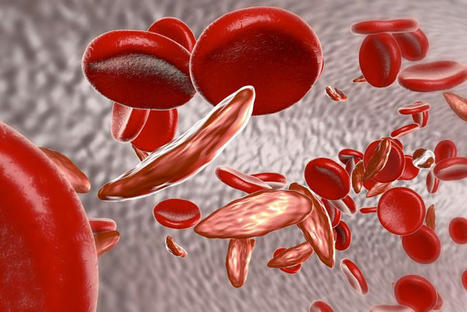

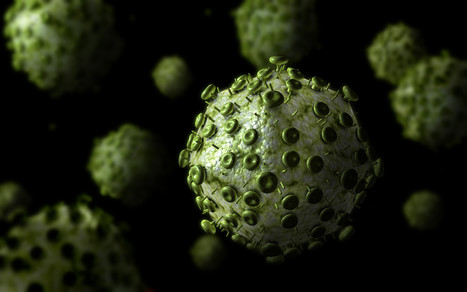

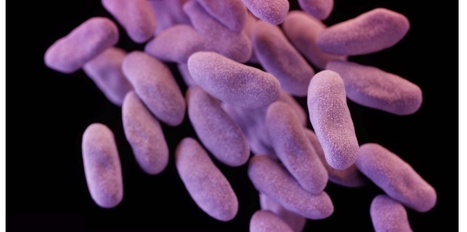


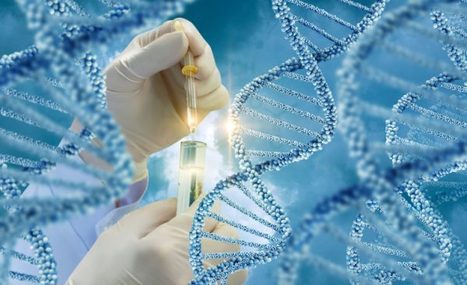
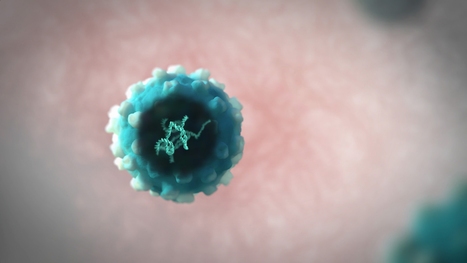
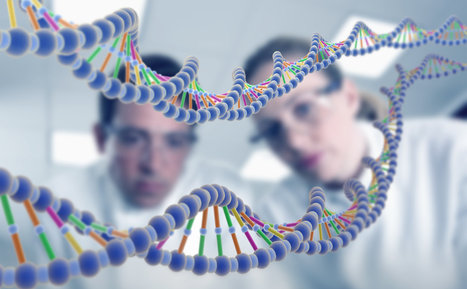



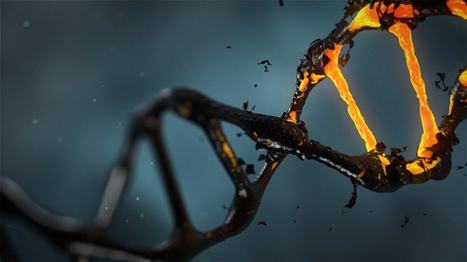


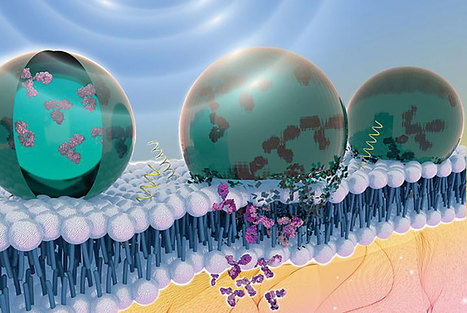
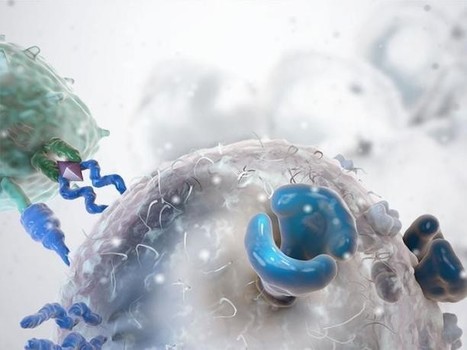











Sickle cell disease (SCD) is a group of diseases characterized by defective adult hemoglobin, and it belongs to a larger family of autosomal recessive blood disorders known as hemoglobinopathies. A number of treatments exist to manage the symptoms and complications of sickle cell disease, but none of them are curative. Hydroxyurea was the first drug to receive FDA approval for SCD in 1997. It is an anticancer agent that promotes fetal hemoglobin production by a poorly understood mechanism and is widely used today despite side effects. Recently approved treatments include Endari, which increases L-glutamine levels in the blood, triggering a cascade of events that reduces oxidative stress in sickle cells, allowing them to retain some function, Oxbryta, which prevents defective hemoglobin from aggregating, improving SCD symptoms, and Adakveo, a monoclonal antibody that blocks P-selectin, decreasing SCD-related inflammation. Gene editing offers new hope for patients with sickle cell disease. There are currently seven clinical-stage candidates in development, five of which aim to restore fetal hemoglobin (HbF) expression through gene editing of patient-derived cells, while the other two aim to address the root of the disease by directly repairing the underlying disease mutation.